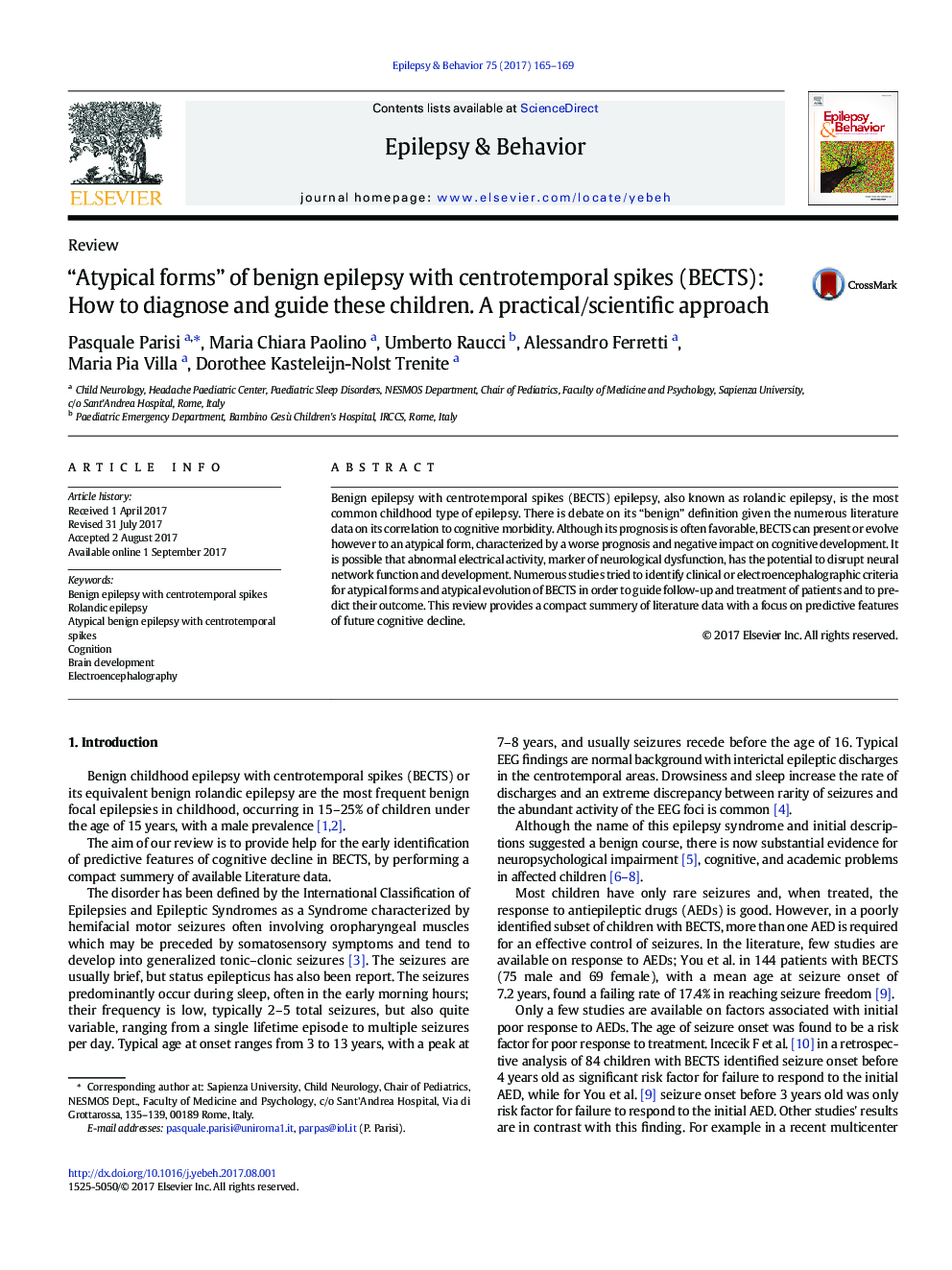| Article ID | Journal | Published Year | Pages | File Type |
|---|---|---|---|---|
| 5628134 | Epilepsy & Behavior | 2017 | 5 Pages |
â¢Benign epilepsy with centrotemporal spikes is the most common childhood type of epilepsy.â¢There is debate on its “benign” definition because of its correlation to cognitive morbidity.â¢Abnormal electrical activity, marker of neurological dysfunction, could have the potential to disrupt neural network function.â¢This review tried to provide predictive features of future cognitive decline.
Benign epilepsy with centrotemporal spikes (BECTS) epilepsy, also known as rolandic epilepsy, is the most common childhood type of epilepsy. There is debate on its “benign” definition given the numerous literature data on its correlation to cognitive morbidity. Although its prognosis is often favorable, BECTS can present or evolve however to an atypical form, characterized by a worse prognosis and negative impact on cognitive development. It is possible that abnormal electrical activity, marker of neurological dysfunction, has the potential to disrupt neural network function and development. Numerous studies tried to identify clinical or electroencephalographic criteria for atypical forms and atypical evolution of BECTS in order to guide follow-up and treatment of patients and to predict their outcome. This review provides a compact summery of literature data with a focus on predictive features of future cognitive decline.
